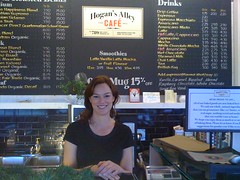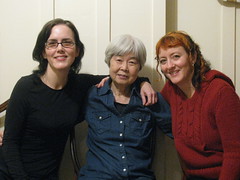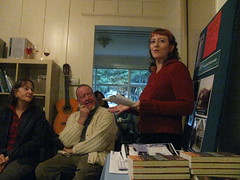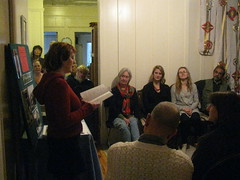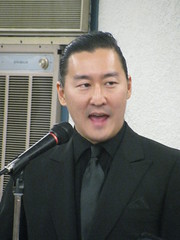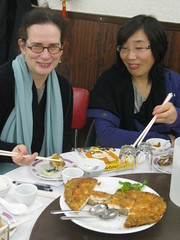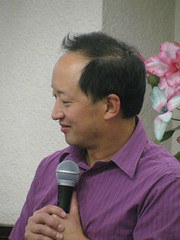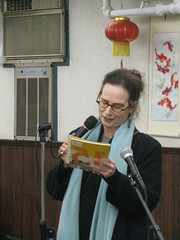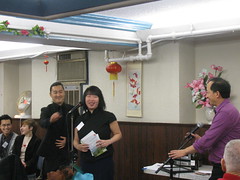What to expect at the Gung Haggis Fat Choy 2011 Dinner

picture by Patrick Tam
Special for 2011Every year, we invite new people to perform and co-host. For 2011, there seems to be a Hapa theme emerging… people who have both Asian and Caucasian ancestry.Patrick Gallagher, Co-hosting will be Glee's Coach Tanaka – who has performed in movies and television shows, such as Da Vinci's Inquest, the bartender in Sideways with Sandra Oh, Master & Commander, Atilla the Hun in Night At the Museum + many more! Patrick also performed theatrically in the touring production of “Naomi's Road” (based on the Joy Kogawa children's book – that preceded the unrelated Vancouver Opera touring production). I have known Patrick for many years, and his sister Margaret Gallagher has previously co-hosted in 2004, as well as performed. We will sing a special version of” Chirish Eyes Are Smiling” to celebrate Patrick's Chinese and Irish heritage
Jenna Chow is the voice you hear on CBC Radio One, for the traffic reports on The Early Edition and On The Coast.
Jocelyn Pettit is a fiddler that people rave about. Some are calling her the next Natalie McMaster… and she is only 15 year's old. Jocelyn's mother is of Chinese ancestry and her father is of Scottish-French Canadian ancestry. 2010 was a special year for Jocelyn because she was able to carry the Olympic Torch in her hometown of Squamish. I met her and her family at the BC Highland Games this summer in Coquitlam. Check out Jocelyn on CBC Radio website: http://radio3.cbc.ca/#/bands/Jocelyn-Pettit-Band
Jeff Chiba Stearns is a repeat Gung Haggis performer. In 2005, his short film “What Are You Anyways?” thrilled our Gung Haggis dinner guests. This year, his new film takes it to another level, as Jeff explores why all his family members of the Japanese side married non-Japanese partners in the full length documentary, One Big Hapa Family. His take is that there are no halfs – everybody in the family is now 100% Japanese Canadian.
Other performers include Gung Haggis Pipes & Drums, bagpiper/musician Joe Macdonald, Vancouver poet laureate Brad Cran + lots of surprises!. More on them in later posts…
The Arrival
Arrive Early:
The doors will open at 5:00 pm, All tables are reserved, and all seating is placed in the
order that they were ordered.
If
you bought your tickets through Firehall Arts Centre, come to the
reception marked Will Call under the corresponding alphabet letters. We
have placed you at tables in order of your purchase. Somebody who
bought their ticket in December will be at a table closer to the stage
then somebody who bought it in mid January, or on the day before the event. We think this
is fair. If you want to sit close for next year – please buy your ticket
early.
If you are at a table with one of the sponsoring organizations: Historic Joy Kogawa House, ACWW/Ricepaper Magazine, Gung Haggis dragon boat team – then somebody will meet you at the reception area and guide you to your table.
The Bar is open at 5:00 and Dinner Start time is 6:00
We
expect a rush before the posted 6:00pm
dinner
time. We have asked that the 1st appetizer platter be placed on the
table soon after 6pm. Once this is done, we will start the Piping in of
our performers and head table. We sing O Canada from the stage, and
give welcome to our guests. Warning: We usually ask you to sing for
your supper.
Buy Your Raffle Tickets:
Please buy
raffle tickets… this is how we generate our fundraising to support this organizations dedicated to multiculturalism and cultural harmony. We
purposely keep our admission costs low to $60 for so that they are affordable and the dinner can be attended by more
people. Children's tickets are subsidized so that we can include
them in the audience and be an inclusive family for the evening. We have some great door
and raffle prizes lined up. Lots of books (being the writers we
are), gift certificates and theatre tickets + other surprises.
FREE Subscription for Ricepaper Magazine:
Everybody is eligible for a subscription to RicePaper Magazine,
(except children). This is our thank you gift to you for attending our
dinner. And to add value ($20) to your ticket. Pretty good deal, eh? Rice Paper Magazine
is Canada's best journal about Asian Canadian arts and
culture, published by Asian Canadian Writers' Workshop,
This dinner is the primary fundraising event for:
The Gung Haggis Fat Choy Dragon Boat team
continues to promote multiculturalism through
dragon boat paddling events. Some paddlers wear kilts, and we have been
filmed for German, French, and Canadian television documentaries + other
Since 2001, Asian Canadian Writers' Workshop,
has been a partner in this remarkable dinner event. ACWW works actively
to give a voice to ermerging writers. ACWW is the publisher of RicePaper Magazine.
Histoic Joy Kogawa House committee joined our family of recipients in 2006, during the campaign to save Joy Kogawa's childhood home from demolition. The Land
Conservancy of BC stepped in to fundraise in 2005 and purchase Kogawa House
in 2006 and turn it into a National literary landmark and treasure for all
Canadians. In 2009, we celebrated our inaugural Writer-in-Residence program.
The FOOD



This year haggis dim sum appetizers will
again
be served. Haggis is mixed into the Pork Siu-mei dumplings Last year we introduced haggis pork dumplings
(su-mei). This year we are adding vegetarian pan-fried turnip cake to represent “Neeps and Tatties.” The secon
Soon
after 6:00 pm the dinner formalities begin. People
are seated, and the Piping in of the musicians and
hosts begins. We will lead a singalong of Scotland the Brave and give
a good welcome to our guests, and have the calling of the clans – all
the reserved tables and large parties of 10. This is a tradition at
many Scottish ceilidhs (kay-lees), or gatherings.
From then on… a new dish will appear every 15 minutes –
quickly followed by one of our co-hosts introducing a poet or musical
performer. Serving 40 tables within 5 minutes, might not work
completely, so please be patient. We will encourage our guests
and especially the waiters to be quiet while the performers are on stage.
Then for the 5 minute intermissions, everybody can talk and make noise
before they have to be quiet for the performers again.
Check this video from past year's Dinner
07:59 –
The Performances
Expect the unexpected: This year's dinner event is full of surprises. Even I don't know what is going to happen. The idea is to recreate the spontaneity of the very
first dinner for 16 people back in 1998 – but with 400+ guests. For
that dinner, each guest was asked to bring a song or a poem to share. I
don't want to give anything away right now as I
prefer the evening to unfold with a sense of surprise and
wonderment. But let it be known that we have an incredible
array of talent for the evening.
Poetry
by Robbie Burns and Chinese Canadian poets. What will it be? We often
like to read “Recipe for Tea” – a poem by Jim Wong-Chu, about the
trading of tea from Southern China to Scotland
Musicians and dancers? Some surprises for 2011

Our non-traditional reading of the “Address to the
Haggis” is always a crowd pleaser. But
this year, audience members might also be reading a different Burns poem to
tie their tongues around the gaelic tinged words. Will it be “A
Man's A Man for All That,” “To a Mouse,” My Luv is Like a Red Red Rose,” or maybe even “Tam O-Shanter?”
The evening will wrap up somewhere
between 9:00 and
9:30 pm, with the singing of Auld Lang Syne – with a verse in Mandarin
Chinese. Then we will socialize further until 10pm. People will
leave with smiles on their faces and say to
each other, “Very Canadian,” “Only in Vancouver could something
like this happen,” or “I'm telling my friends.”
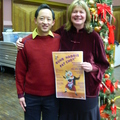


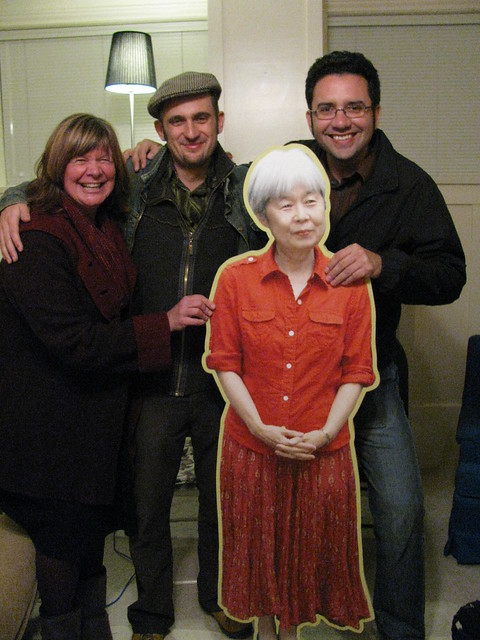
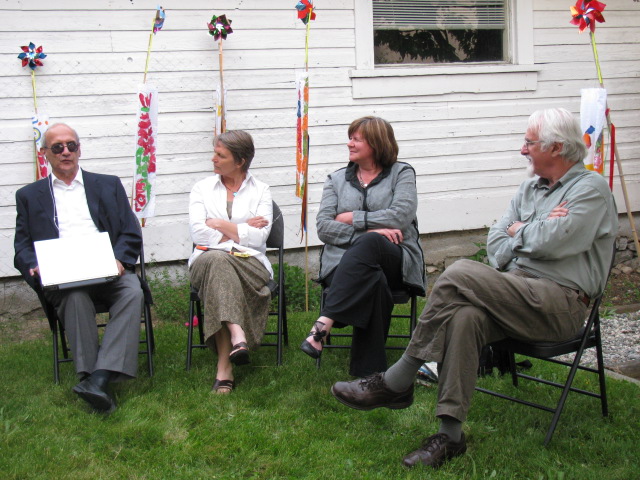




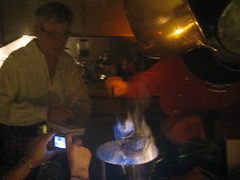
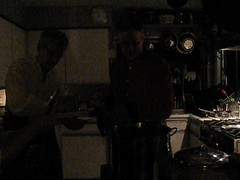
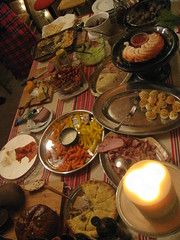
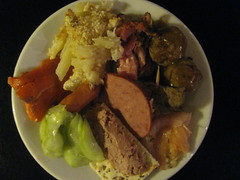
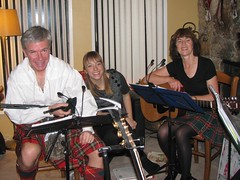
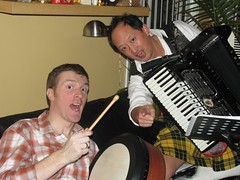
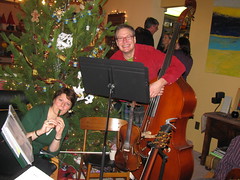

 picture by Patrick Tam
picture by Patrick Tam





